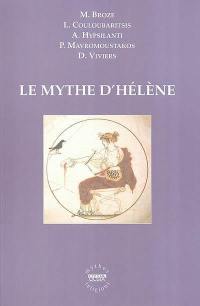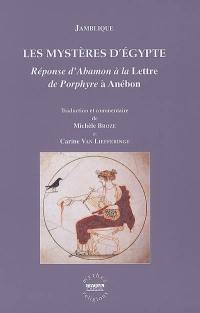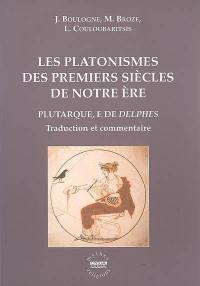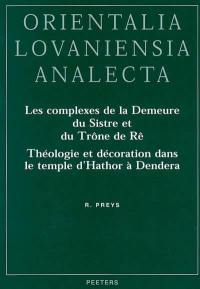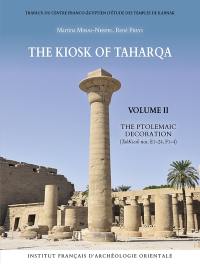
Fiche technique
Format : Relié
Nb de pages : 256 pages
Poids : 1346 g
Dimensions : 25cm X 33cm
ISBN : 978-2-7247-0779-3
EAN : 9782724707793
Etudes et relevé épigraphique (Ka2Pyl nos 1-33)
Quatrième de couverture
La porte du deuxième pylône du temple d'Amon constitue une des réalisations les plus monumentales des Ptolémée a Karnak. Construite au début de l'époque ptolémaïque, elle fut décorée sous trois rois successifs. Ptolémée IV Philopator n'eut le temps que d'appliquer son nom sur l'avant-porte, avant que n'éclate la revolté thébaine. Après avoir rétabli l'ordre, Ptolémée VI Philométor décora en un premier temps la façade de la porte de scènes d'offrandes au dieu Amon. Une douzaine d'années plus tard, c'est le passage intérieur de la porte qui fut grave. Finalement, Ptolémée VIII Évergète fit graver les textes cosmogoniques du soubassement de la façade.
Les textes de la porte décrivent la théologie du dieu Amon dans ses différents aspects. Depuis la création du monde par le dieu, sa ville et son temple sont le modèle sur lequel sont construites les autres villes. Thèbes est le siège du créateur d'ou il règne sur le monde. Les scènes décrivent la relation entre Amon et sa parèdre Mout, ainsi que son fils Khonsou, mais également avec d'autres divinités, telles que Montou, Maât, Isis et Amonet. La décoration définit aussi la relation du dieu Amon avec l'ogdoade et les dieux de Djémé. Textes et images, que nous éditons ici, témoignent de la vitalité de la théologie thébaine a l'époque ptolémaïque, et des pratiques du mythe dans la civilisation égyptienne ancienne.
The gate of the second pylon of the temple of Amun is one of the most monumental achievements of the Ptolemies at Karnak. Built at the beginning of the Ptolemaic period, it was decorated under three successive kings. Ptolemy IV Philopator only had time to put his name on the avant-porte (the small supplementary gate in front of the main gate) before the Theban revolt broke out. After restoring order, Ptolemy VI Philometor first decorated the front of the gate with scenes of offerings to the god Amun. A dozen years later, the decoration of the interior passage of the gate was carved. Finally, Ptolemy VIII Euergetes had cosmogonic texts carved on the lowest section of the gate's facade.
The texts of the gate describe various aspects of the theology of the god Amun. Since the creation of the world by the god, his city and his temple had become the model on which other cities were built. Thebes was the seat of the creator from where he ruled the world. The scenes depict not only the relationships between Amun and his consort Mut and his son Khonsu, but also with other deities, such as Montu, Maât, Isis and Arnunet. The decoration also defines the relationship of the god Amun with the ogdoad (group of eight gods) and the gods of Djeme on the west bank at Thebes. The texts and images published in this volume testify to the vitality of Theban theology in the Ptolemaic period, and to the applications of the mythology in ancient Egyptian civilization.





